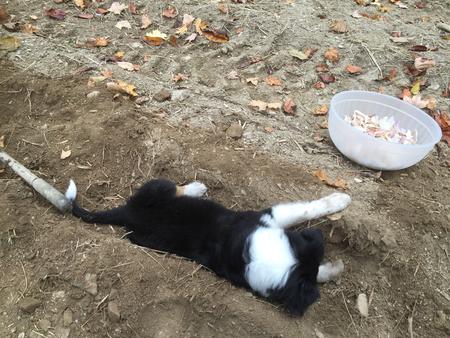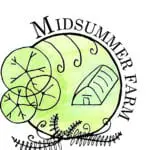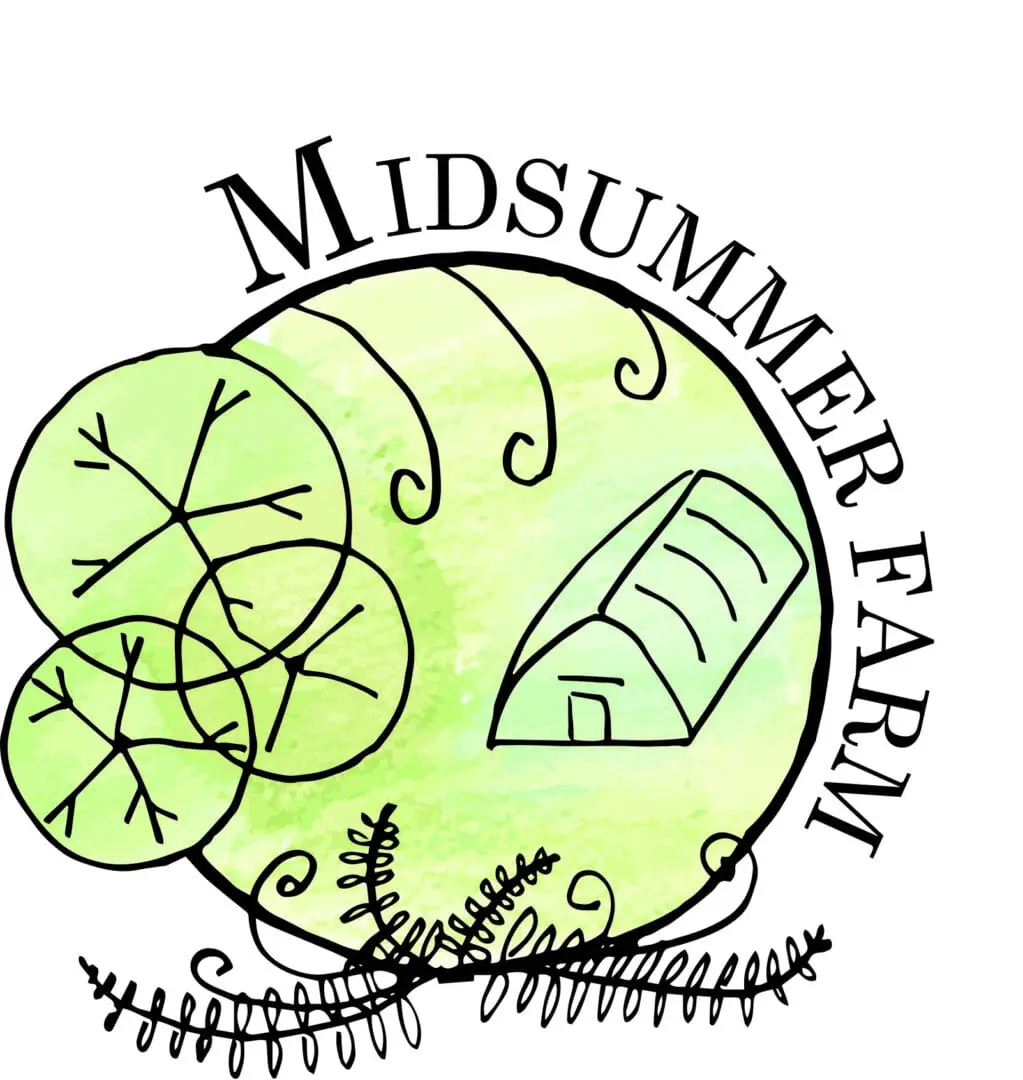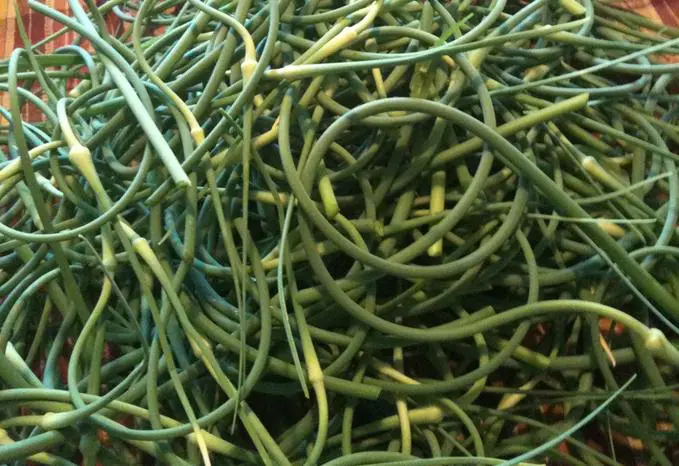
GARLIC
Planting
We usually plant our garlic mid-October. It is a very simple process – put toes (or cloves) into a 4-5-inch-deep hole or ditch; position them root-side-down and pointy-sprout-side-up; cover with soil. The bulbs will start growing their roots within days. It is all about root growth in the Fall. Before winter is upon us and the ground freezes, you should have between 3″ and 5″ of green top showing above the ground. If you don’t get much green, don’t fret, they usually catch up in the spring anyway. If you dig the cloves up in a month or so, you’ll find a large mass of healthy roots – that’s what you want so the garlic gets through the winter and starts forming a large bulb early next spring.
No wild animals or birds will bother the garlic, but chickens will dig them up if they can get to them. Right around Thanksgiving, I like to check them, pile the soil up around them, and pat the row down.
In mid-December, cover with another 1-2 inches of heavy leaf mulch or compost. (By waiting until mid-December, you allow the ground to be ‘open’ for sun and warmth.) Try to apply the mulch right before a rain in mid-December. The cloves should form good roots, and about 4-6 inches of green leaf part should grow before the weather gets too cold.
I also like to check on the garlic a couple other times throughout the winter – if we get a lot of temperature fluctuation and not much snow, the toes may be heaved from the soil. If you find them heaved, and the soil is unfrozen, push them back in and pat the soil and mulch over them. The more root they establish in the fall, the less likely they will heave.
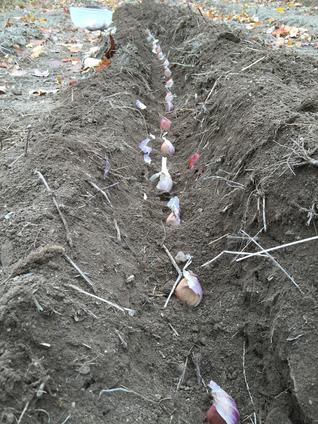
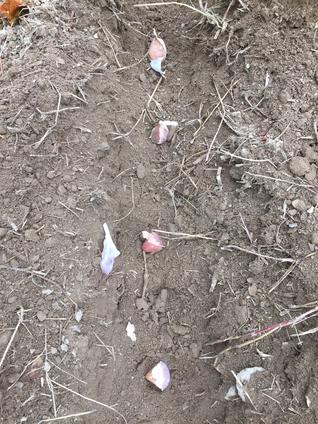
Hard Neck Varieties We Recommend for This Area:
- Music – A beautiful medium-hot flavored garlic. Porcelain variety with good storage.
- German Red – A very spicy rocambole – vigorous and loves cold weather. Bright red wrapped cloves.
- Metechi – This is the first time we’re trying this porcelain variety – it is supposedly very large and beautiful with lost of purple striping.
Seed-Garlic is actually the same as Eating Garlic. If you come by the farm to purchase Seed-Garlic from us, you could also just eat it!
You could actually plant the white garlic you buy at grocery stores too – although if they aren’t organic, they may be sprayed with some sort of anti-sprouting agent. Also, the white bulbs at most grocery stores is a soft-neck garlic variety, which are better grown in California. The hard necks grow better around here, and we get our seed garlic from certified-organic garlic growers.
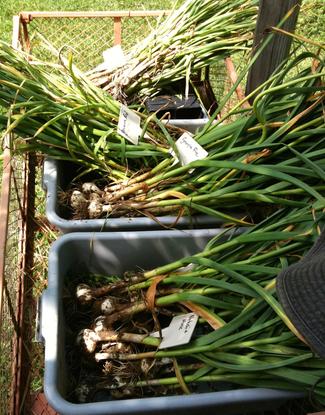
Size of the Toe or Clove
Many people will swear that the bigger the toe, the bigger the resulting bulb. I really don’t know. I don’t bother planting the really small inner toes, as they are really not fully developed. So I only plant the mature outer toes with strong shells. And there are so many factors that influence growth throughout the course of the year, I really don’t know if I’ve seen any true evidence that the bigger toes led to bigger bulbs….
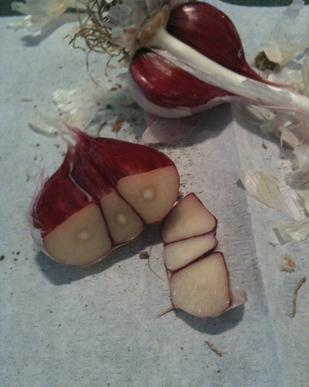
Garlic Scapes
I would still plant garlic even if I never got bulbs. I adore the scapes you can harvest in June! You only get scapes on Hard Neck garlic – the scape is the “hard neck” …
In the spring, a tough round stem starts to grow from the center of each garlic you planted. This is the scape – it forms a fabulous curly cue and a small garlic bulb on the end. If you leave the scape on the garlic plant, it will form a mini garlic bulb on the scape and you can eat that mini bulb as you would a regular bulb of garlic. However it is small, and if the plant is allowed to grow that aerial bulb, it will feel finished with its reproductive cycle, and not bother with growing a big garlic bulb under the soil. So most garlic growers cut the scape off once it has curled.
The scape is delicious! It has a mild, fresh, green, garlic flavor that happens to go fabulously with other spring flavors like pea shoots, morels, nettles, and asparagus. I chop it up fine and lightly sprinkle in salads, and I chop them into 1/2 inch size pieces and sauté them. So I’m thrilled when I harvest the scapes; when I harvest the bulbs in the late summer, it is a total bonus!
And from a cut flower perspective – if you put a bunch of scapes in a heavy vase, they’ll keep growing and twisting longer and longer, creating an amazing twirling display!
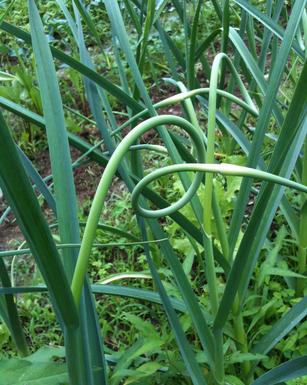
The Garlic Growing Calendar:
- Plant toes in Mid-Fall in a spot where they can overwinter safely.
- Around December 21st, apply mulch before a rainy day
- 3rd week of April – get a head start on weed control!
- June – harvest your scapes!
- June 21st – All energy in the garlic plant switches to bulb growth. Leaves start dying down.
- After the Fourth of July – garlic is basically ready – not much more growth of the bulb will occur. When half the row is turning brown/yellow, then on the first set of nice dry days when the soil is dry, pull the garlic up. Don’t wait too long, the papers start deteriorating if left in the ground too long.
- Each some fresh out of the ground, but cure most of your bulbs for storage by spreading or hanging in a open and dry area out of direct sunlight. This curing process develops the flavor distinctions between the varieties.
- Labor Day – peak flavor
- October – Replant toes for next year’s garlic.
Spring Maintenance for Your Garlic
Early May is a perfect time for cleaning up the garlic row. I make sure to get rid of any weeds at this point, add a dash of fertilizer, and loosen the soil around the base of the plants.
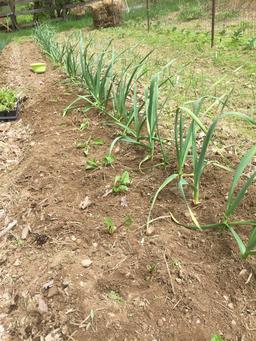
Some Further Thoughts on Garlic
Garlic is a great companion plant for almost everything but peas and beans. (I usually plant all alliums away from peas and beans.) The only issue is that it is in its spot in the garden for a very long time, and you’re planting it at a time when you’re also cleaning up and putting in cover crops, so it becomes difficult to spread it around the garden. I usually plant my garlic all together in a single row that I can take care of easily. I then use onions and scallions that are planted in the spring, as companion plants, inter-planting them among the vegetable plants and flowers. (Note – you can also plant shallots now, same as you would garlic!)
Garlic also repels a lot of pests and is considered a superfood – healthy and supportive for all animals and birds to eat.
I have been reading some very interesting things on making garlic tea sprays for preventing fungus and blights on vegetable plants like tomatoes and squash, which I am planning to try next year in case we have another super wet late summer. (I currently use a horsetail tea for that purpose, and it works well. But I’m thinking combining it with a garlic tea may make it even more effective.)
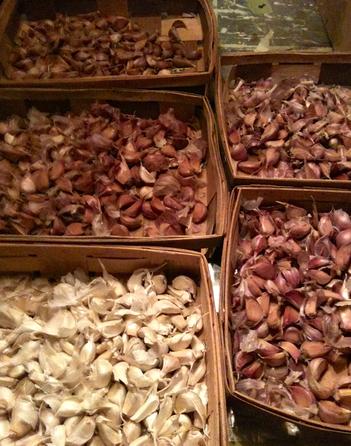
Garlic is different from most other alliums – one of the most dramatic is that it is safe to feed to your dog, despite the fact that onions are actually poisonous to dogs. But don’t think that feeding your dog garlic, will keep mosquitoes, fleas, or ticks off the dog! That really is a myth. I think it may help keep bugs away to a degree from humans, but not from dogs. The garlic smell that would repel bugs, comes out in the perspiration … humans can perspire from the entire skin surface, but dogs only perspire from their noses and pads on their paws. And note, if you’re not sweating, then mosquitoes won’t be repelled no matter how much garlic you consume each day!
But remember garlic is an important superfood not just for repelling insects! Garlic has been celebrated as one of the most important medicines in the East and West for over 5,000 years. I can go and on listing all the fabulous effects it has on various ailments…
Garlic as a superfood – a nutrient-dense element that can be added to the diet making the person consuming it healthier.
Garlic is addictive – the more you eat, the more you want – and you find yourself throwing more and more into everything you cook! Enjoy growing, harvesting, cooking, and eating it!
Garlic Broth!
And I want to share my recipe for Garlic Broth – it not only delicious, but is a serious anti-bacterial tonic that I drink regularly to prevent colds and flues and is also very effective for treating almost any sort of infection.
When I have a cold, I make a big pot and sip it continuously throughout the day.
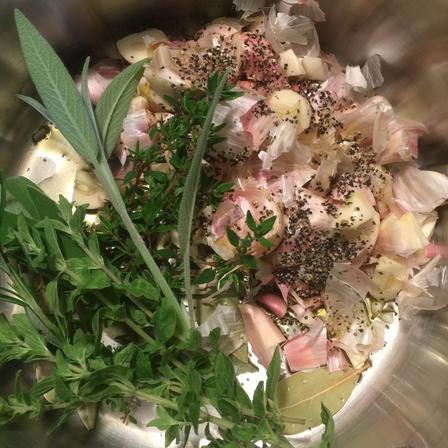
RECIPE: Aigo Bouido (Garlic Broth/Tonic)
Adapted from an old Provençal recipe. This is a great anti-bacterial brew.
Ingredients
6 cups of water
salt to taste
2-4 bay leaves
A couple sprigs of fresh sage
A spring of thyme
10-12 cloves of garlic, roughly chopped
2-3 tbsp of Olive oil
slices of semi-dry French bread (OPTIONAL)
2/3 c of freshly grated gruyere/swiss or fontina style cheese (OPTIONAL)
Directions
Combine water, salt, bay, sage, thyme, 2 tbsp of the Olive oil, and garlic in a large pot.
Bring to a boil, then reduce heat, cover with lid slightly ajar, and simmer at least 15-30 minutes. Discard herbs and pass broth and garlic through a sieve. I usually press the garlic against the sides of the strainer with a spoon and then scrape off the garlic mush into the broth. The more the better!
You can drink as is – or make it fancy (think French Onion Soup) by placing 2 slices of bread in each bowl, sprinkle a little Olive oil and grated cheese on each slice. And then reheat sieved broth, gently pour over the breads, and serve. If you’re using it as a tonic in treating a cold or respiratory/sinus infection, do not add the cheese. The cheese, being a dairy product, will make any congestion or mucus worse!
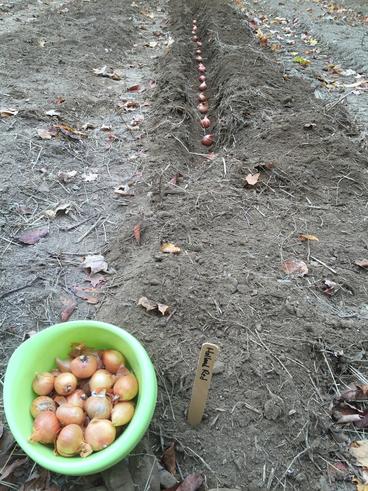
Shallots!
Shallots can be planted the same way as garlic. They are so worth planting – they are so expensive in stores and almost always moldy.
Don’t get fooled into thinking shallots are just expensive onions – although you can substitute an onion for a shallot in a recipe in a pinch, shallots truly add a special flavor that can’t be matched by most onions!
Planting Garlic With a Puppy
Is really hard! The garlic should be in the trench, not the pup!
